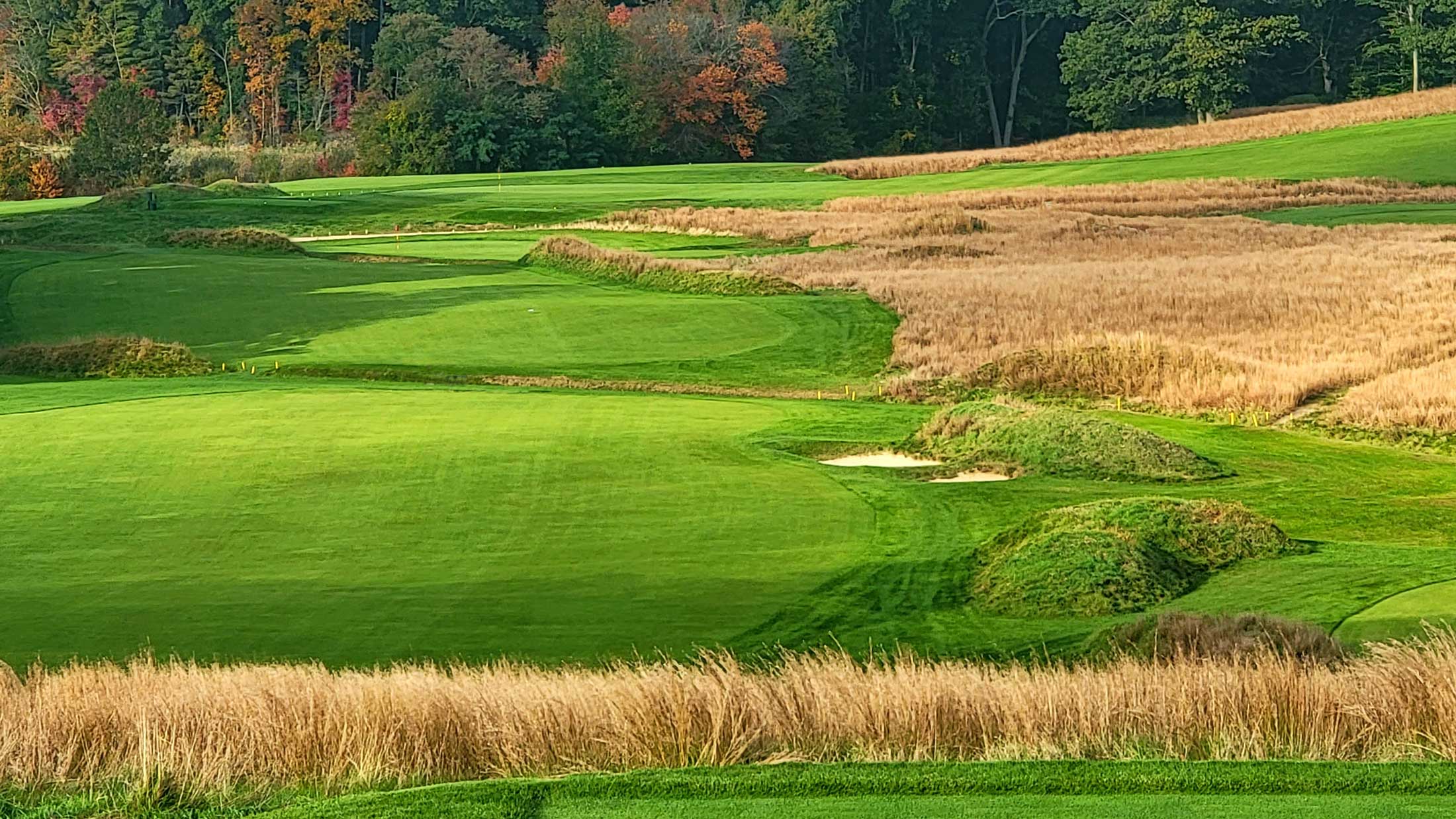
Oakland Hills in Bloomfield Hills, Mich.
LC Lambrecht
A quick look at the most recent Top 100 Courses in the World, which GOLF.com debuted Tuesday, will show a lot of similarities to past lists. Pine Valley is No 1. Cypress Point is No 2. In fact, the entire group of Top 10 courses was no different this time around.
There was, however, plenty of movement down the rest of the list, highlighted by some splashy leaps following recent renovations. Old, classic country clubs have benefitted, Architecture Editor Ran Morrissett said, from a booming financial market the last decade. With money to spend, many of those clubs focused their efforts on the grounds of their course, creating firm courses with all kinds of playability. Remove hundreds of trees? Our raters tend to love that. Why? Because golfers love that. Minimalism and playability are the theme here, and one of the main reasons why the courses below shot up the ranking this time around.
“The way some of these courses are playing is truly inspirational,” Morrissett said during a recent discussion with a pair of fellow raters. Check out the courses below that each jumped 15 spots or more on the list, with some reasoning behind each.
Six Courses that Made the Biggest Moves
Oakland Hills — Bloomfield Hills, MI (No. 31, up 41 spots):
“I have to say, when I first went to see Oakland Hills … When I saw it, I didn’t quite get it,” said Top 100 rater Simon Holt. “I came home and I was like, ‘Why is Oakland Hills ranked so highly. I’ll dip into my library and I’ll grab The Confidential Guide and Tom [Doak] rated it an 8 or a 9. I just didn’t quite get it. So that was a pleasant surprise to me to see it jump so highly because when I read up about it, it was all about these amazing green complexes.”
That is part of the hook of Oakland Hills, and a recent renovation that was completed in 2021 has increased its appeal in a big way for raters. Holt, who is based in Scotland, says he’s done plenty of reading on this particular renovation from Gil Hanse and Jim Wagner, and how they have increased the size of the greens at Oakland hills by 35%. Holt’s thoughts now are simple: “I’m excited to go back there. That’s a pleasant surprise for me.”
Inverness — Toledo, OH (No. 65, up 16 spots):
The story at Inverness wasn’t shared during a conversation with our raters, but it’s an easy one to speak on myself. It mirrors much of what Oakland Hills did and what other courses on this list did. Inverness brought in Andrew Green for a restoration of what Donald Ross initially intended with the property. That meant removing hundreds of trees, undoing some work from a prior renovation and creating some new holes (replicas of Ross holes) on the far reaching corner of the property. Clearly, our course raters love it, but they weren’t alone. Inverness hosted the Solheim Cup in September and totally delivered for the best female golfers in the world. You can check out some of what makes Inverness great in the video below, with footage captured in July.
Baltusrol (Lower) — Springfield, NJ (No. 57, up 70+ spots):
The biggest jump on the entire list from a course that is decades old came from Baltusrol’s Lower course, which underwent a restoration project also via Hanse and Wagner. Morrissett was asked on our roundtable what trend has dominated the changes in the ranking and this course was the first that came to his mind.
“On the 13th hole at Baltusrol, which has a ditch down the right side, no surprise I went into the left rough,” Morrissett said. “You know, better safe than sorry. I hit a hybrid and the hybrid hit 20 yards short of the green. I’m 6-foot-3 and I can tell you that ball bounced at least twice as high as I am tall. And the ball kept running, running, running onto the putting surface, to the middle of the putting surface, to the back edge of the putting surface, and then started coming back.
“I felt like I was at Muirfield in Scotland. I used to work for the USGA in the mid-90s and that shot would have ended two or three or four yards from where it landed in the mid-80s. It’s a brand new day for inland golf.”
Myopia Hunt Club — Hamilton, MA (No. 72, up 20 spots):
“Built around the turn of the last century, this lay-of-the-land design by H.C. Leeds features greens that follow the flow of their general surrounds,” Morrissett wrote. “Modern green speeds make many of the approach shots prickly, especially those at the 4th, 6th, 8th and 13th holes. Leeds’s trench-like bunkers need to be avoided and Hanse’s restoration has the entire design at peak. The challenge of this 6,555-yard course doesn’t hinge on length, which is a fact that our panel embraces.”

Ran Morrissett
Ohoopee Match Club, Cobbtown, GA (No. 73, up 25 spots):
“The best starting point for a course is to be built on sand,” Morrissett says. “That’s what happened here, courtesy of sand deposits over the millennia on the east side of the Ohoopee River. Gil Hanse and Jim Wagner knew exactly what to do, too. They crafted a low profile course out of the scrubland that feels like it has been there for ages. Prime playing season is November through April and the dormant Bermuda provides blazingly quick surfaces that allow the design to flourish.”
Rock Creek Cattle Company — Deer Lodge, MT (No. 84, up 15 spots):
“Situated in the Montana foothills, the landforms are just as compelling — and so is the architecture — as Tom Doak’s breakthrough design at Pacific Dunes, some 610 miles southwest,” Morrissett said. “The lumpy-bumpy fairways provide all sorts of interesting bounces, sometimes propelling a golfer’s ball toward the green and other times, shunting it to the side where the approach angle becomes disadvantageous. The green sites are appealingly diverse, ranging from saddles to bowls to ridgelines. It is exhilarating golf, with its American West setting being a major differentiator.”










